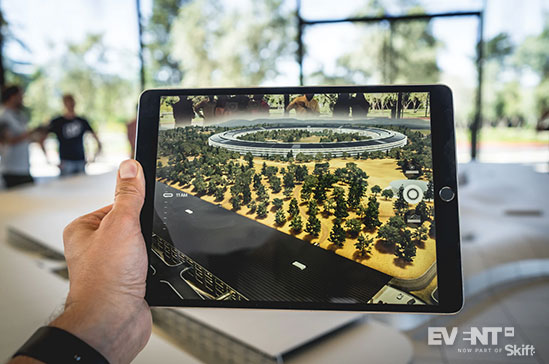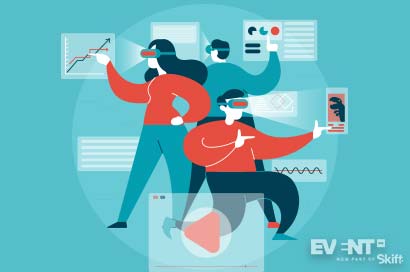I was checking my Twitter feed a few days ago when I stumbled into this tweet from Verizon.
We’ve created the first EVER 5G AR concert experience with @Verizon and @LiveNation happening at @ChaseCenter. Tune in TONIGHT at 9:15pm PT on @twitter to get a taste of this groundbreaking 5G experience. #5GBuiltRight #WorldWarJoy pic.twitter.com/e0HzHZlZDY
— THE CHAINSMOKERS (@TheChainsmokers) 2019年11月29日
Very excited.
5G is the next big thing in events. It will take all our wifi worries away. It can make our lives better.
Seemingly every major phone company but Apple launched compatible devices this year at MWC Barcelona, which showcased 5G applications in everything from robotics to flight simulations.
And who better to pursue the potential of 5G than Verizon? “5G is an enabler,” said Verizon Executive Vice President and President Ronan Dunne at MWC Los Angeles last October. “It will enable artificial intelligence, deep, deep analytics, the ability to have ubiquitous connectivity.”
But AR has been so over-hyped. If you heard me speaking at events, you know I am not a big fan of it. It’s still a gimmick and the true value of it remains to be seen.
I paused my Netflix with an open mind. I wanted to change my mind, especially on AR. I also wanted to see what 5G and AR combined could do.
Plus, Verizon engaged influencers of the caliber of Brian Solis and Guy Kawasaki to spread the word. I was hooked.
Was it all buzzwords? Or is it actually something that we can apply to events? Don’t go all ‘this is a concert’ on me. Remember how excited you were when you read about the festivalization of events? Stay with me.

What Is 5G Anyway?
5G is the next generation of wireless networks.
5G will bring greater speed (to move more data faster – some suggest speeds up to 1,000 times faster than 4G LTE), lower latency (to be more responsive, meaning minimal delays), and the ability to connect a lot more devices at once (for sensors and smart devices).
The idea is that we can get rid of wifi where there is good coverage.
AR/VR, artificial intelligence, live streaming, self-driving vehicles, the Internet of Things (IoT) are some of the applications that will take advantage of 5G networks. But for now, the major difference between LTE and 5G will be speed.
5G is not quite at its full potential yet, and it will probably take a few more years before we see it get there. Right now, you need to be in the right city with the right device to access it, but as coverage continues to expand to new areas, more services that rely on instant high-speed connectivity should become possible.
The four major US carriers, AT&T, Sprint, T-Mobile, and Verizon, started deploying the technology in major metropolitan areas this year. Atlanta became the first city to have it available from all four carriers, followed by Dallas-Fort Worth and New York. So far, AT&T has deployed 5G in 30 cities, Sprint in 9, T-Mobile in 6, and Verizon in 17 with 10 more already planned (Source Wikipedia 2019).
Venues are also stepping up to keep pace with the trend, starting with the LA Convention Centre, which added infrastructure to support 5G when it hosted MWCA in 2018.
So how did it go??
THE HYPE
Touted as “the first 5G-powered concert” and a “groundbreaking 5G experience,” The Chainsmokers’ performance at the Chase Center in San Francisco on November 29th promised to deliver a new experience to concert-goers.
According to Verizon’s news release:
THE RESULT
Meh.
Here are the problems that I had with it:
- Only one song was covered by the AR technology and interaction was limited. The AR 5G experience was also only available to people in a very specific seating area.
- If you were watching the stream live on Twitter, it was ok. You could see these objects appearing – not necessarily transformational or mind-blowing.
- The biggest issue with AR is still there. You needed a phone to experience it and you had to touch the screen to interact with objects. Essentially shifting the attention away from the singers on stage.
What was ok with it:
The promise of using 5G to push strong tech driven activations is cool. I love that. AR is not the way to do it, but permeating the experience with additional tech elements to almost drive you outside of the show is one to watch.
Micro or macro projection mapping would have been cooler.
What Should You Do About It?
The entertainment industry is pushing the potential of 5G. Apart from The Chainsmokers’ concert, other experiments and activations are underway.
During the 4th episode of X Factor Italy (a singing competition), guest Gianna Nannini was able to performed on stage in Monza and interact with the competitors even though she was physically in Berlin thanks to a hologram transmitted through the Vodafone 5G network. Funnily enough, the 5G-powered bridge was faster than the satellite they were using to chat outside of the performance.
The very low latency and the broadband allowed for the ultra-rapid transfer of high definition video streams, which made it possible to guarantee a very high-quality audio-video performance and real-time interaction between the singer and the competitors.
In this case, holograms were a better activation option than AR as interaction was still possible, but no screen was necessary to take advantage of it. The use of holograms to transport people is also in line with virtual experiences that respond to the rise in flight-shaming.
But impressive feats like these are only one end of the 5G benefits spectrum (and likely the end furthest from us). There are more immediate, pressing challenges that 5G promises to solve in events:
- Reliable connectivity: 5G will finally solve the wifi problem that’s been plaguing the industry for years (still reported by 58% of planners in 2019).
- Facilitate better infrastructure: in larger event spaces (e.g. stadia or convention centers), sensors and cameras that depend on consistent connectivity could ease traffic flow, help with heat-mapping to improve foot traffic, boost the efficiency of concession stands or vendor booths, and conceivably improve security measures.
- Expand the coverage: higher bandwidth would mean supporting nearly seamless digital interactions, which can increase customer engagement and satisfaction. Live event streaming will also be more reliable and of higher quality.
IN CONCLUSION
5G networks might not be quite ready yet, but they have the potential to revolutionize many industries, including events.
Event organizers need to be ready to embrace the technology when it’s rolled out on a larger scale and available in venues around the globe.
The benefits for the organizers and the attendees are too numerous not to take advantage of as soon as possible.





